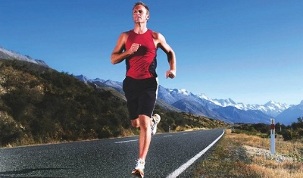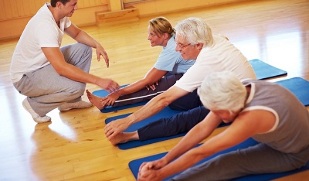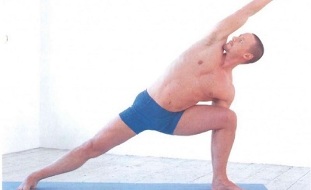
Inflammation of the prostate gland or neoplasms in the form of adenomas, which lead to urinary disorders and sexual dysfunction, are a consequence of general aging of the body or are caused by external infections and improper lifestyle.
Regardless of the cause of this pathology, a special set of physical exercises can significantly facilitate the process of treatment and restoration of prostate function in men.General physical education, the effect of which is tripled by a healthy diet and abstinence from alcohol and cigarettes, strengthens the immune and hormonal system of men and in most cases eliminates the appearance of prostatitis even in old age.
But in the case where there are already even the slightest signs of inflammation, such as difficulty and pain during urination, you should see a doctor before proceeding with self-medication. The intensity of the symptoms of prostatitis can be deceptive. Only after a study by a specialist can the stage and nature of the course of the disease be established, as well as a set of physical exercises corresponding to it.
Patients diagnosed with chronic prostatitis and in the process of recovery from adenoma surgery are prescribed special therapeutic exercises, which are carried out under the supervision of a physician. In milder forms of inflammation, the effects of drug therapy can be supported by exercise, which strengthens muscles and improves blood circulation in the pelvic area. Physical activity not only stimulates the metabolism, but also relieves the psychological stress caused by the disease and supports the male body, revealing all the possibilities for self-healing.
Daily exercise
The entire male population of the planet is subjected to a sedentary lifestyle to one degree or another. For those who work only in case of many hours of freezing in the fifth point, ie people with a daily sedentary regime of eight hours or more, regular training and short warm-ups every hour and a half in a static position are recommended, regardless of where the person is.
The exercise for prevention of prostatitis can be introduced in the special training menu, or you can do only one of them as a short warm-up, repeated up to ten times. All exercises are done in an upright position, the first movement is inhalation, the transition to the starting position is exhalation. The back is straight, the legs do not separate from the floor.
- Squat with knees to the side;
- Raise the leg, bent at the knee so that the line of the thigh is parallel to the floor. Then transfer the upright leg behind your back. You can change this exercise by moving your legs to the side. If you find it difficult to maintain balance, you can first train with your hand resting on the back of the chair. Then gradually move on to accent-free performance;
- Slow circular movements with an upright leg, while tensing the muscles of the buttocks;
- Wide front and side strikes. In this case, the other leg bends;
- Jumping in place, with two legs and alternating legs;
- Pull to the ceiling with outstretched arms.
For all-day warm-ups, you can use exercises to pull and relax the abdomen and buttocks. The basic principle is to fix the most tense muscles and their gradual relaxation for as long as possible. In addition, these exercises can be performed in a sitting position.
Climbing stairs is another easy-to-use prostatitis exercise that strengthens your pelvic floor muscles. You can imitate such a step on a bench or chair, while depending on the degree of fatigue you can do this exercise in a different rhythm from slow walking to fast running.
A set of exercises for the pelvic organs

Exercises for prostatitis and adenoma should be strictly normalized: you can not get tired, you definitely need to follow the measure and get a charge of energy and pleasure from training.
When training in the morning or on the mat at home, do exercises that strengthen the muscles of the pelvis and perineum and improve blood circulation in the lower torso. It is important to note that progress in the exercises is measured not only by increasing repetitions, but also by improving technique. Stretching should increase over time, the movements will become light and clear.Most exercises are performed with leg movements while lying on your back:
- Straight legs are raised perpendicular to the floor and held for a few seconds;
- Straightening the legs, bent at the knees, parallel to the floor;
- Leg movements like cycling, you need to perform up to 500 circular movements per day. In this case, the movement must be both clockwise and counterclockwise;
- Raise your pelvis with your knees bent above the floor, then straighten your legs and spread them in opposite directions;
- Draw circles and eights with your legs, you can diversify this exercise by moving your legs closed and straight up and down diagonally;
- You should lift your legs from a lying position and spread them apart. Fix this position for a few seconds.
You should also practice:
- Exercises with a training ball: rolling in a sitting and lying position, pressing the ball between the thighs and legs, jumping in this position.
- Floor supports from the floor, for beginners - from the wall or bar.
- Bench retention: positions with emphasis on elbows and legs.
- Move to the backs while sitting.
- Jump rope.
- Leans forward from a lying position with fixed legs.
In the complex of daily gymnastics there should be exercises for stretching the muscles and increasing the flexibility of the lower part of the spine.
Yoga for prostatitis
Before performing the exercises called asanas, you will need to do preparatory work. To determine which exercises are appropriate in each case, you need to acquire basic knowledge of hatha yoga, reach a certain level of muscle stretching and master a special breathing complex.
Here is a description of three asanas that will require quite a long training to complete:
- The legs are divided into an incomplete slit 10 cm from the floor, the body is bent and the arms extended forward touch the legs. The same is done in the other direction;
- Straight posture, body weight is transferred to one half-folded leg. The foot of the other foot is carried over the supporting shin, the arms are intertwined around the body;
- Lying on your stomach, grab your ankles with your hands and bend your body as much as possible.
Invisible gymnastics for prostatitis

These are special exercises that are indicated for prostatitis and require concentration and relaxation. With their help a unique massage effect is achieved. The exercise should be repeated several times a day, doing 10-20 repetitions.
- As you inhale, pull the anus, as you exhale, relax. It is important to do the exercise rhythmically, using two different options. In the first, retraction and release are performed at regular intervals as quickly as possible. In the second case, the state of maximum tension should be maintained as long as possible, then the muscles should be gradually and gradually relaxed - also prolonging this process as much as possible.
- Interruption of urination. You can literally practice interrupting the flow of urine, leading to such breaks of up to 30 urination. You can also simulate the interruption of urination by muscle contraction.
These exercises can and should be performed for prostatitis and prostate adenoma, alternating starting positions: upright, sitting, lying down. If done correctly, you may feel a rush of heat in the groin area, there may be a slight residual pain that should go away over time.
Physiotherapy exercises
This is a special set of physical exercises for the treatment of prostatitis, which are usually combined with massage and other physiotherapy procedures and lead to the restoration of impaired erection, urination and defecation. Such exercises, which generally repeat the preventive gymnastic complex, are prescribed by the doctor depending on the medical history and after the urologist has decided on how to treat the disease. Exercise with prostatitis can cause increased pain, so it is important to perform them with regular medical supervision.
Exercise for chronic prostatitis is very rare. According to the urologist's testimony, simulator exercises and the use of dumbbells and barbells to pump certain muscle groups can also be prescribed.
All types of physical activity - walking, running, swimming, jumping rope, cycling, in the absence of medical contraindications, contribute to the treatment of prostatitis, increasing the patient's vitality and improving his mood.
























